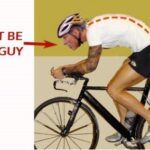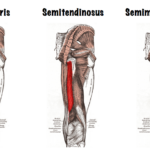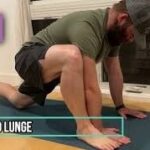

It’s nothing new. We hear it all the time that our shoulders are ground zero for our lack of perfect posture. Our sedentary lifestyles, our fixation of strengthening only the front half of our bodies in the gym, and our adaptations to the digital age have our upper halves rounding forward at an alarming rate. Is it our traps? Is it our pecs? Is it our neck? Probably a combination of all the above. But one muscle, one that tends to go under-looked and neglected, could be the one that if you begin to address it, could finally take you over the hump and free from upper back and shoulder pain. And that’s the serratus anterior.
Where’s it located and what does it do?

If you palpate along both sides of your torso, underneath your armpit and along the ribs, you’ll feel the “serrated” –like muscle. Though more visible on leaner individuals, I assure you, we all have this critical, yet underrated muscle. The function of the serratus anterior is to allow forward rotation of the arm and to pull or protract the scapula around the ribcage. Think of the motion you make while throwing a punch, or the movement of the shoulders during the second half of a pushup. They also work as a team with your rhomboids to keep your shoulder blades in place. Stability is king! For example, when you hold weights out in front of you, your rhomboids engage to keep your shoulder blades from flying apart. When you’re pushing against something, the floor for example, your serratus anterior takes over to keep your shoulder blades from collapsing inwards. It also plays a vital role in allowing upward rotation of the arm, allowing a person to lift items over their head. When firing properly, the serratus anterior anchors and stabilizes the scapula, aiding in an opened chest and lifted posture.
When Overactive
Though it’s most likely to come across a weak, underactive SA in most individuals, it is possible to develop trigger points and hyper-tonic areas across the tissue as well. The most common area is near the 6th rib, referring pain along the entire side of the body.
Stretching/Releasing the SA
Stretching the SA effectively can be a difficult task, especially if a client has limited mobility or pain in the shoulder. Also, it may be difficult to isolate the SA without feeling the stretch in the bigger muscle groups like the pecs and lats. Many stretching tutorials have the client raise their shoulder overhead and lean laterally. This will indeed stretch the muscle along with the lats, but some might not have the range of motion to elevate their arms overhead without compensation. Since protraction and stability is the main job of the SA, we must focus putting it into retraction in order to optimally stretch the muscle.
1. Place your palm as an anchor on your hip creating a wing shape with your arm. This hand should not move during the stretch.
2. Place the elbow against the wall and lean toward the wall; allowing the elbow and scapula to move as far behind your back as possible.
3. Maintain the elbow position, and rotate the torso away from the wall while also leaning your torso to the opposite side to finish stretch. Play around with it. It may take a minute to notice a stretch.
(see video below, left)
Foam rolling while sidelying will target the affected area as well. Focus on noting small tender areas and once you find them, hang out and apply static pressure. The slower you go, the easier it’ll be to target the localized problem area.
(see video below, right)
When Weak
When we notice ourselves or see others in the infamous rounded, collapsed forward posture, it’s likely the serratus anterior is involved to some extent. A weak SA will cause the body to look for other ways to compensate upper rotation of the shoulder blade. Enter the dreaded upper trapezius and neck pain we’ve all experienced at some point. You’re simply giving more responsibility to one muscles group instead of sharing the love.
Strengthening/ Activating the SA
As mentioned earlier, the pec minor muscles are synergists to the serratus anterior, meaning they help in the function and movement of the same joint. With the pecs being more of a prime mover of the shoulder, it’s easy to confuse pectoral strength with serratus anterior strength. Therefore, being able to pump out a hundred pushups in a row doesn’t mean you possess adequate SA strength. As with the stretch mentioned above, you want to isolate the movement of the muscle being targeted as much as possible. Below are two ways to activate serratus anterior.
Wall Angels
1. Stand six to eight inches from the wall. Tuck your chin and rotate your pelvis back against the wall. Keep the knees slightly bent.
2. Stand with your elbows raised to shoulder level and your wrists directly above the elbows, fingers extended.
3. Inhale. Raise your elbows and wrists upward trying to maintain contact with the wall the entire time. As you exhale, lower your elbows toward the sides of the waistline. Use muscular contractions to keep your elbows and wrists close to the wall. Pause and repeat.
4. Perform each repetition slowly. Consciously practice shoulder external rotation, retraction and depression to help stabilize upper structures.
Foam Roller Wall Rolls
1. Taking the foam roller you used for releasing the area prior, place it against the wall chin height.
2. Feet hip distance apart. Engaging the core
3. Pace your wrists on the foam roller, making either an “I” formation or “Y” formation with your arms
4. Drive the elbows forward, feeling the shoulders blades engaging while rolling the foam roller up the wall then back down to the starting position. It’s not a very large movement.
For an added progression, you could place a resistance band around your elbows.
Sources:
- https://www.ncbi.nlm.nih.gov/pubmed/26749459
- https://corebalancetherapy.com/2012/08/30/the-serratus-anterior-the-forgotten-muscle-in-shoulder-and-neck-pain/
- https://www.coreexercisesolutions.com/the-serratus-anterior-a-secret-weapon-for-great-posture/
- https://www.amtamassage.org/uploads/cms/documents/mattek_shoulder.pdf
- http://www.amtamassage.org/uploads/cms/documents/Methods4CorrectingUpperQuarterStrainPatterns.pdf
Photos:
- http://www.kingofthegym.com/serratus-anterior/
- http://shoulderpaindiffdiag.weebly.com/long-thoracicserratus-anterior-palsy.html
This article/video is for educational purposes only; do not attempt without your physician’s clearance. If you are in pain or injured, see your physician.
Copyright © Vidal Sports LLC 2018





